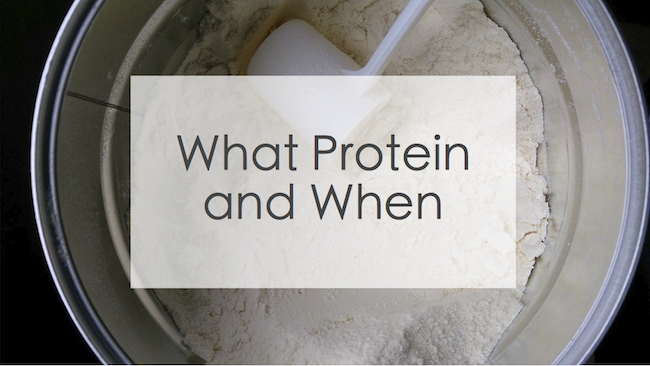Ok, have you noticed that their are, almost literally, a ton of proteins out on the market these days? I mean, really. We have the whey, soy, powder mixtures, and a whole bunch of others. Each of these proteins does something different and is best used to get different results. Of course, some have milk, animal bi-product, and other allergens.
The first thing to know about this crazy protein maze is that each protein is measured by it's biological value. Biological value, or BV, measures the amount essential amino acids in a protein. The higher this value, the better the source of protein and the leaner muscles it will produce.
Whey Protein
Like the saying, curds and whey, whey is the watery substance that separates itself from the curds during cheese production. It is a milk by-product and therefore, has lactose. Although, some with mild or moderate lactose intolerance may be able to take whey without any unwanted side effects.
Many protein bars and shakes advertise that they use whey protein because this is the protein with the highest BV with a score of 104. This is a great form of protein for those working out to gain muscle, but should be taken at the right time and from the right source. The benefits of whey protein include reduced stress, lowered cortisol levels, lowered risk of asthma in infants, reduced risk of cancers including colon cancer, improves weight loss, and reduced blood pressure, whey has also been found to reduce the risk of allergies in children when given between birth and 6-months of age. To get all of these health benefits, be sure to take micro-filtered whey; this is they process where whey is separated from milk.
There are two main forms of whey protein, whey isolates and whey concentrate (or just whey). Whey isolates will be absorbed into the body faster and are great to take after a workout for immediate effects for increased lean muscle production, but they lack all the other benefits. For this reason, whey concentrate is better to take throughout the day.
As far as whole proteins go, eggs have the next highest BV with a score of 100. Beef protein has a BV of 80.
Milk Protein
Milk protein ranks just under egg with it's BV. This protein has a BV of 100! Milk protein is also the most common form of protein found in meal replacement shakes, protein bars, and protein powders. Although, there are plenty of these products on the market that have a protein mix- most likely using both milk and whey.
When using milk protein in protein additives like protein powder, you are most likely using a casein protein powder, the most abundant protein in milk. Casein is separated by milk through ultrafiltration. Casein protein is also slowly absorbed into the body, meaning that the amino acids will take longer to absorb, but will keep you full for longer. This form of protein also helps balance protein levels in or body over a longer period of time.
Since casein is released slower than other proteins, it is no wonder that this form of protein is what we commonly see in meal replacement shakes because of it's weight loss benefits. Whey and casein protein combinations have also been shown to massively increase muscle performance and the growth of lean muscle when taken after a workout.
Soy Protein
Soy protein is among the proteins with the lowest BV, at 49-74 depending on it's base. Bean based soy proteins have the lowest BV. This protein has, however, been shown to help both men and women lower the bad LDL cholesterol while keeping the good HDL cholesterol levels un-touched. Soy has also helped women balance hormone levels during menopause and helps men and women reduce the risks of osteoporosis.
If your goal is muscle growth, soy protein is probably not your BFF.
